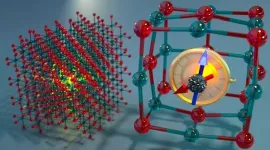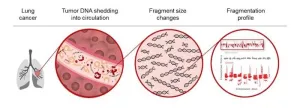(Press-News.org) NEW YORK, NY--An injectable emulsion containing two omega-3 fatty acids found in fish oil markedly reduced brain damage in newborn rodents after a disruption in the flow of oxygen to the brain near birth, a study by researchers at Columbia University Vagelos College of Physicians and Surgeons has found.
Brain injury due to insufficient oxygen is a severe complication of labor and delivery that occurs in one to three out of every 1,000 live births in the United States. Among babies who survive, the condition can lead to cerebral palsy, cognitive disability, epilepsy, pulmonary hypertension, and neurodevelopmental conditions.
“Hypoxic brain injury can have devastating, lifelong consequences, and we suggest our novel therapeutic approach using intravenous omega-3 emulsions could markedly reduce these adverse outcomes,” says Richard Deckelbaum, a professor of nutrition and pediatrics and a coordinating author of the study.
The study also found that the novel omega-3 preparation is far more effective in rodents when compared to therapeutic hypothermia, the current standard therapy for this condition and the only one approved by the FDA. This treatment, which involves using cooling blankets for three days, only benefits about 15% of patients and can cause heart and respiratory complications.
“We need to find another treatment for hypoxic brain injury that will be much more effective and feasible than therapeutic cooling and can be used in the immediate hours after the injury when therapy is likely to be most effective,” says Hylde Zirpoli, an associate research scientist in Deckelbaum’s group and senior author of the study.
New injectable fish oil formulation
Previous studies by Deckelbaum’s team and others have shown that omega-3 emulsions—tiny droplets of omega-3 fatty acids dispersed in liquid—may have neuroprotective effects and that omega-3 fatty acids found in fish oil reduce inflammation and cell death caused by oxygen deprivation. But the bioactive compounds contained in commercially available oral omega-3 supplements take weeks or months to have an effect, so they aren’t ideal for protecting organs immediately after injury.
The Columbia team developed an injectable omega-3 therapy that can be used in just such situations. The therapy is a diglyceride formulation—two omega-3 fatty acids, DHA and EPA, bound to a glyceride molecule—which enhances their ability to emulsify into tiny, concentrated particles. These fatty acids are also found in fish oil, though fish oil and dietary sources of fatty acids are mainly triglycerides, which have three fatty acids per molecule.
The new diglyceride is predicted to cause a higher concentration of omega-3 molecules to rapidly penetrate the blood-brain barrier.
Study results
The researchers gave the therapy to week-old mice and rats with hypoxic brain injury. The experimental emulsion reduced brain damage far more than a commercially available omega-3 injectable emulsion (only approved as a nutritional supplement for infants with intravenous nutrition-related liver disease). Doses for both omega-3 preparations were similar.
The experimental emulsion may have worked better than the commercial emulsion because it was absorbed into the animals’ bloodstream two times faster.
The researchers also found that animals treated with the new therapy had normal motor coordination and reflexes—indicators of neurologic function—similar to the animals with no brain injury.
“The omega-3 diglyceride emulsion not only prevented brain cell death, but it also preserved neurologic function, which is important in reducing the cost of disabilities, both to the patient’s well-being and to the health care system,” Deckelbaum says.
Next steps
The researchers hope to begin clinical trials in newborns within two years and plan to expand studies on the therapy’s effectiveness in preventing damage to the central nervous system in animals with traumatic brain injury and spinal cord injury. Additional studies will explore applications in other acute injuries and conditions in which oxygen deprivation causes organ damage, including heart attack and stroke.
END
Omega-3 therapy prevents birth-related brain injury in newborn rodents
2024-06-06
ELSE PRESS RELEASES FROM THIS DATE:
Calcium oxide’s quantum secret: nearly noiseless qubits
2024-06-06
Calcium oxide is a cheap, chalky chemical compound commonly used in the manufacturing of cement, plaster, paper, and steel. But the material may soon have a more high-tech application.
UChicago Pritzker School of Molecular Engineering researchers and their collaborator in Sweden have used theoretical and computational approaches to discover how tiny, lone atoms of bismuth embedded within solid calcium oxide can act as qubits — the building blocks of quantum computers and quantum communication devices. These qubits are described today in Nature Communications.
“This system has even better properties than we expected,” said Giulia Galli, Liew Family Professor ...
Innovative combination therapy shows promise for bladder cancer patients unresponsive to standard treatment
2024-06-06
TAMPA, Fla. (June 6, 2024) — In a groundbreaking advance that could revolutionize bladder cancer treatment, a novel combination of cretostimogene grenadenorepvec and pembrolizumab has shown remarkable efficacy in patients with Bacillus Calmette-Guérin (BCG)-unresponsive non-muscle invasive bladder cancer. Results from the phase 2 CORE-001 trial, published today in Nature Medicine, reveal a significant improvement in complete response rates and long-term disease control, offering new hope for patients with this challenging condition who face limited treatment options.
The trial included patients with BCG-unresponsive carcinoma in situ of the bladder, a condition that is notoriously ...
SFU Physics collaboration pushes an information engine to its limits
2024-06-06
The molecules that make up the matter around us are in constant motion. What if we could harness that energy and put it to use?
Over 150 years ago Maxwell theorized that if molecules’ motion could be measured accurately, this information could be used to power an engine. Until recently this was a thought experiment, but technological breakthroughs have made it possible to build working information engines in the lab.
With funding from the Foundational Questions Institute, SFU Physics professors John Bechhoefer and David Sivak teamed up to build an information engine and test its limits. Their work has greatly advanced ...
Artificial intelligence blood test provides a reliable way to identify lung cancer
2024-06-06
Using artificial intelligence technology to identify patterns of DNA fragments associated with lung cancer, researchers from the Johns Hopkins Kimmel Cancer Center and other institutions have developed and validated a liquid biopsy that may help identify lung cancer earlier.
In a prospective study published June 3 in Cancer Discovery, the team demonstrated that artificial intelligence technology could identify people more likely to have lung cancer based on DNA fragment patterns in the blood. The study enrolled about 1,000 participants with and without cancer who met the criteria for traditional lung ...
The ethical matrix: it's not just smart; it's the smart thing to do
2024-06-06
Artificial Intelligence (AI) is the talk of the town, but far too often expediency has been the driver, not responsible innovation. The NYC Media Lab (NYCML) at NYU Tandon School of Engineering and Bertelsmann launched their 4th challenge this month, this time aimed at mentoring teams with projects that use AI to responsibly advance their fields.
The 2024 collaboration, The Ethical Matrix Challenge: Forging New AI Frontiers in Media, Communications, Education, and Healthcare, focuses on ethical AI and its power to have a real-world influence. The four selected teams have projects that can responsibly revolutionize the way ...
Study: Young athletes at risk for elevated blood pressure rates, future cardiovascular complications
2024-06-06
A substantial portion of young athletes are at risk of hypertension, according to a study presented at the American College of Cardiology’s Care of the Athletic Heart conference, taking place on June 6-8 in Washington.
High blood pressure, also known as hypertension, occurs in 47% of adults in the U.S., according to CardioSmart.org. Over time, hypertension weakens the heart, blood vessels and kidneys, paving the way for potential stroke or heart attack. Often referred to as the “silent killer,” high blood pressure is a leading risk factor for heart disease and early death.
The 2017 ACC/American Heart Association Guideline for the Prevention, ...
Mpox continues to circulate at low numbers among gay and bisexual men who have sex with men
2024-06-06
While mpox cases have sharply declined since the 2022 global outbreak, they continue to occur in the U.S. among gay and bisexual men who have sex with men (GBMSM), according to a UCLA-led study from EMERGEncy ID NET, a multisite surveillance network funded by the Centers for Disease Control and Prevention (CDC).
Though no cases were found in women, children or the unhoused, vigilance and vaccination remain important, the researchers write.
The findings will be published June 6 in the CDC’s Morbidity and Mortality Weekly Report.
Mpox, formerly known as monkeypox, ...
How the cell cycle orchestra plays an unexpected new tune
2024-06-06
How the Cell Cycle Orchestra Plays an Unexpected New Tune
UCSF scientists discover that multiciliated cells adapt the well-known process of cell division to make hundreds of cilia.
The awe-inspiring process of cell division can turn a fertilized egg into a baby – or a cancerous cell into a malignant tumor. With so much at stake, nature keeps it tightly controlled in a process called the cell cycle that scientists thought they thoroughly understood.
But now it turns out there was more to know. Scientists ...
Exotic black holes could be a byproduct of dark matter
2024-06-06
For every kilogram of matter that we can see — from the computer on your desk to distant stars and galaxies — there are 5 kilograms of invisible matter that suffuse our surroundings. This “dark matter” is a mysterious entity that evades all forms of direct observation yet makes its presence felt through its invisible pull on visible objects.
Fifty years ago, physicist Stephen Hawking offered one idea for what dark matter might be: a population of black holes, which might have formed very soon after the Big Bang. Such “primordial” black holes would not have been the goliaths that we detect today, but ...
El Centro Regional Medical Center provides financial and operational updates
2024-06-06
El Centro Regional Medical Center (ECRMC), an affiliate of UC San Diego Health, today announced several financial and operational updates, demonstrating significant progress toward stabilizing and strengthening a critical health services asset in the Imperial Valley.
“Our goal is simple — to ensure that the people of El Centro and the broader Imperial Valley have long-term access to health care services,” said Pablo Velez, RN, PhD, chief executive officer, ECRMC. “Over the last year, the amazing team of dedicated physicians and staff at ECRMC have worked tirelessly in partnership with UC San Diego ...


